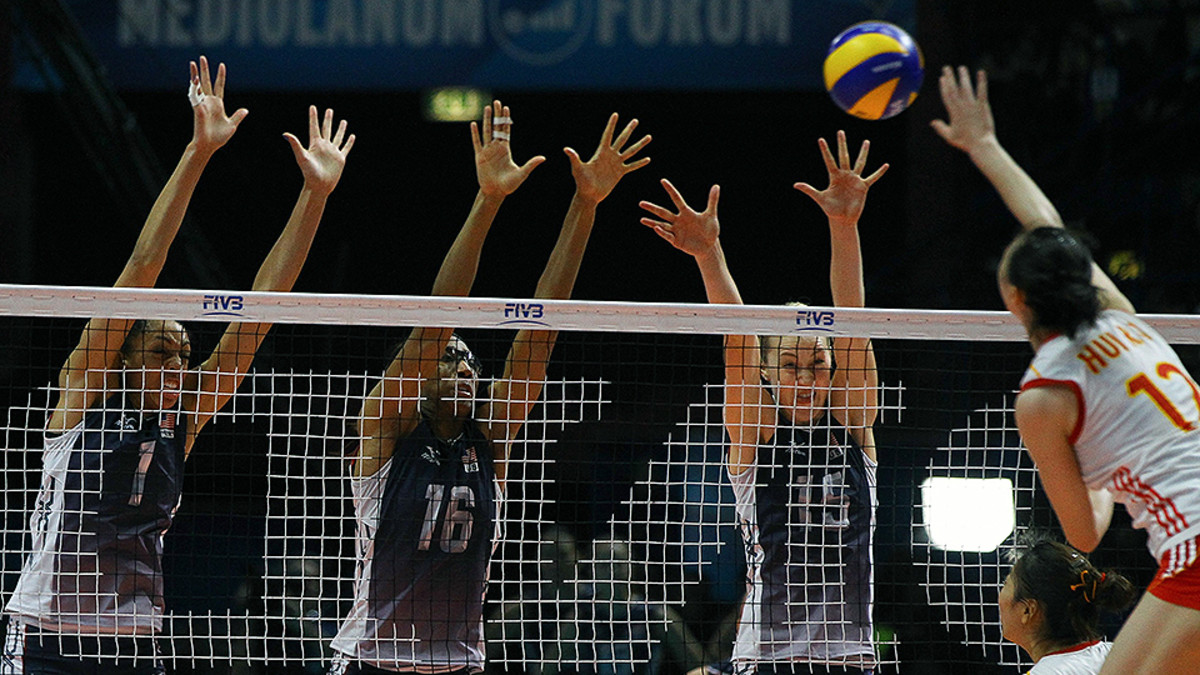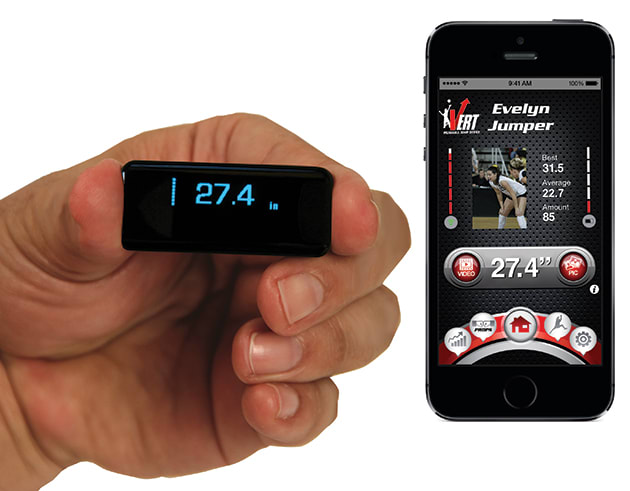USA Volleyball monitoring vertical jump statistics with new technology
The U.S. Women's National Volleyball Team could streak to three straight titles, if only head coach Karch Kiraly can keep his players fit. The team already has a gold medal from the FIVB Volleyball World Championships in Italy last October, defeating China 3–1 in the final match. Next up is the World Cup in Japan this summer, and then the Olympic Games in Rio in 2016. Team USA has never won either.
“It’s very important in these next two years to keep this group healthy,” Kiraly says. “If they breakdown, it they have lots of injuries, then the gold medal-winning group at the world championships has less of a chance to do something special in Rio.”
With that in mind, USA Volleyball partnered with a company called VERT last July. VERT produces a sensor about the size of a USB stick that measures the height and frequency of volleyball (or basketball) players’ jumps. By tracking this information, Kiraly hopes to be able to not only adjust national team workouts to reduce injury, but also to watch over his players when they’re playing for club teams abroad.
“Oftentimes [when] we go to our professional teams overseas we come back pretty beat up,” says Christa Harmotto Dietzen, a middle blocker on Team USA. Dietzen had right knee surgery in December 2013 due to an overuse injury. Playing a five set match directly after finishing her tour with the national team in 2013, Dietzen landed strangely and damaged cartilage in her knee. “Had I not played that match,” she says, “ maybe that wouldn’t have happened.”
[daily_cut]
However, injury wasn’t on VERT founder Martin Matak’s mind when he first came up with the original idea for his device twenty years ago in Plantation, Florida. “I was coaching little league basketball, kids between [the] ages of 12 and 16,” Matak says, “and all they cared about was how high they could jump.” They wanted to be able to leap up high so they could dunk. The problem was, Matak couldn’t tell them.
Back in the 1990s, accurately working out how high someone could leap off the ground wasn’t easy. But Matak, who majored in advertising from the University of Florida, with a minor in astrophysics, couldn’t get the idea out of his head, and as the available technology kept improving, so did the design. He thought about using lasers, and built prototype shoes that had first infrared and then ultrasonic sensors. “Basically shoes with fish finders,” he says.
VERT finally evolved into a jump rate monitor that fits into a small belt worn around the waist. It includes a gyroscope to determine which direction is up and accelerometers to measure changes in velocity. Using this data, the takeoff of the jump, high point (when velocity is zero), and landing can all be determined. To ensure accuracy, the device needs to be worn at hip level, near a person’s center of mass. VERT retails online for $124.99 and is compatible with iOS devices.
.
Kiraly is also hoping that his organization’s partnership with the company will mean they can collaborate in VERT’s future development. As well as keeping players healthy, he also wants to use it to prepare his team by matching the workload in training to that in a typical competition. And when Kiraly releases his players back to their overseas clubs at the end this year’s national team season—a year before they head to Rio—he plans to send them each off with a VERT monitor clipped to their waist.






